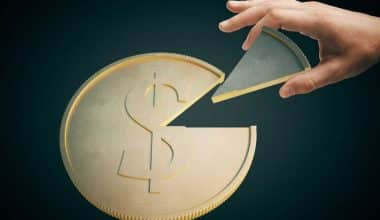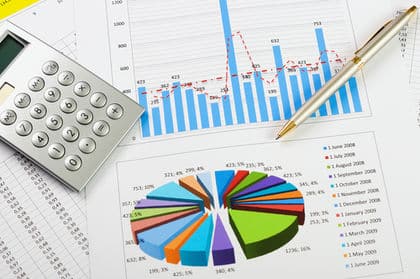You may have heard of the rule of 72 and wondered what it is. Well, when it comes to investing, there are a lot of rules involving it, and the rule of 72 is one of them. Investment is a well-known term in the business world. It refers to the process of making a financial commitment in order to reap financial rewards. There’s more to the rule of 72 than meets the eye. To be able to fully use the rule of 72, you have to know the rule of 72 formula and the rule of 72 calculator.
Rule of 72
The Rule of 72 is a technique to estimate how many years it will take for your money to double at a given interest rate. There are several other rules illustrating the rule of 72, which are rules 69, 69.3, 70, and 73. They are almost similar to the rule of 72 but differ in a way.
Origin of the Rule of 72
The rule of 72 may have been in existence for a long time but was only recognized when Venetian Luca Pacioli, 1494 (considered the father of modern accounting; an Italian mathematician) explained it in his book Summa de arithmetica. He explains it in a discussion regarding estimation as the wanting to know of any capital at a given yearly percentage, in how many years it will double, adding to the interest of the capital.
Albert Einstein recognized it in his own way when he said, “Compound interest is the eighth wonder of the world.” Furthermore, the rule predicts that your investment will double in interest rate. The number 72 divides into 1,2,3,4,6,8,9, and 12 cleanly, which makes the division problem easier.
What Is the Rule of 72?
The rule of 72 estimates how many years one requires to double an investment at a given annual rate of return. As they say, knowledge is power. Carefully estimating investment gives you an insight to the number of years required to make profit.
Application of the rule of 72
The rule of 72 usually applies to investment and rates of return. Calculators and spreadsheet programs can accurately calculate the exact time required to double the money invested. But the rule of 72 uses mental evaluation to calculate how many years it takes to make an investment. That is why the rule of 72 is an introductory topic for learning investors because it is easy to learn.
The rule of 72 applies also to any subject of compound interest, such as population, macroeconomic numbers, charges, or loans.
Example
The economy of a country is expected to double in 72/6% =12 years if the gross domestic product grows at a steady rate of 6% annually.
With regards to the fee that eats into investment gains, the Rule of 72 can also demonstrate the long-term effects of these costs.
A mutual fund that charges 3% in annual expense fees will reduce the investment principal by half in 24 years.
A debtor who pays 5% interest on the loan they took will double the amount they owe in six years.
The rule can find the amount of time it takes for money’s value to halve due to inflation. If inflation is 6%, then the purchasing power of the money will be worth half in 12 years. (72 /6 = 12).
If inflation decreases from 6% to 4%, an investment will lose half its value in 18 years instead of 12 years.
Additionally, the Rule of 72 can apply across all kinds of durations, provided the rate of return is compounded annually. If the interest per quarter is 4% (but interest compounds annually), then it will take (72 / 4) = 18 quarters, or 4.5 years, to double the principal.
If the population of a nation increases at the rate of 1% per month, it will double in 72 months, or six years.
Rule of 72 formula
The rule of 72 formula can estimate the compound interest for doubling an investment
It is the simpler form of compound interest. Rule of 72 formula interest rate multiplied by the number of years
t*r=72
where
- r = interest rate per year as a percentage
- t = number of years
8% is used as a common average and makes this formula most accurate for interest rates from 6% to 10%.
Is the Rule of 72 Accurate?
The Rule of 72 formula gives a close estimation of the timeline. It usually reflects the fact that it’s a simplification of a more complex logarithmic equation. To get the exact doubling time, you’d need to do the entire calculation.
The formula for calculating the exact doubling time for an investment earning a compounded interest rate of r% per period is.
To find out exactly how long it would take to double an investment that returns 8% annually. you would use the following equation:
T = ln(2) / ln (1 + (8 / 100)) = 9.006 years
As you can see, this result is very close to the approximate value obtained by (72 / 8) = 9 years.
The Rule of 72 calculator
It may not be obvious at first glance how this exact equation will bring us to the rule of 72. For it to become clearer, input ln(2) into a calculator. It’s an irrational number, but when you calculate it will give a number that equals: 0.69314718056.
Or, phrased in another way, 69.3%.
That’s how you get the rule of 69.3. But unless you’re a math whiz who somehow memorized multiples of 69.3 it’s still pretty difficult to do the equation. Thus, 70 and 72, which have more numbers that divide cleanly into them while still giving close approximations, became popular.
Or, because 5% is 3 points below 8%, the rule of 71. With this rule, that country’s GDP would double in 14.2 years.
Money isn’t the only thing that can increase at a compounded rate. Say there is a city whose population increases by 6% a year. With the Rule of 72 calculator, you can estimate that a city will double its population in 12 years. Conversely, if the population is decreasing by 6% a year.
You can use the rule to estimate that in 12 years, the population will decrease by half.
Using the rule of 72 to determine when something is decreasing instead of doubling also comes in handy if you’re using it regarding increasing inflation.
If a currency has a yearly inflation rate of 9%, we can ascertain by dividing by 72 that, at this rate, the currency would be worth half its value in approximately eight years.
Other Uses of the Rule of 72
These rules apply to exponential growth and can therefore be used for compound interest as opposed to simple interest calculations. The choice of number is mostly a matter of preference: 69 is more accurate for continuous compounding, while 72 works well in common interest situations and is more easily divisible.
There are a number of variations to the rules that improve accuracy. For periodic compounding, the exact double time for an interest rate of r percent per period where t is the number of periods required.
The formula can calculate the doubling time. If one wants to know the tripling time, for example, replace the constant 2 in the numerator with 3. As another example, if one wants to know the number of periods it takes for the initial value to rise by 50%, replace the constant 2 with 1.5.
When you invest a sum of money at 9% interest per year. calculate the number of years to double your investment using the rule of 7?
t=72/9 = 8 years
You can use the rule of 72 calculator to estimate the number of years it will take to double your investment or the rate of return.
To calculate the number of years an investment will double, divide 72 by the given rate.
The result remains the same for fractions and decimals because it still represents a portion of the year.
Example Calculations in Years
- When you invest a sum of money at 9% interest per year, how many years will it take to double your investment?
T=72/9 = 8 years
- If you invest a sum of money at 7% interest per year, how many years will it take you to double your investment?
T =72/7 =10.286 years
Example Calculation in Months
If you invest a sum of money at 0.5% interest per month, how long will it take you to double your investment?
T=72/R = 72/0.5 = 144 months (since R is a monthly rate the answer is in months rather than years).
144 months = 144 months / 12 months per years = 12 years
To Calculate the Interest Rate,
Divide the integer 72 by the number of years required to double your investment.
The number of years does not need to be a whole number; the formula can handle portions of a year.
In addition, the expected rate of return assumes compounding interest at that rate over the entire holding period of an investment.
r=72/8 =9%
How Can You Calculate the Exact Amount?
How will you know the exact number of years required for an investment to double?
The actual number of years comes from a logarithmic calculation, one you can’t really determine without having a calculator with logarithmic capabilities.
That’s why the rule of 72 exists. it lets you basically figure out how long it will take to double without requiring an actual physical calculator on your person.
The Rule of 72 is a simplified version of the more involved compound interest calculation. It is a useful rule of thumb for estimating the doubling of investment. This calculator provides both the Rule of 72 estimates as well.
Because fixed interest rates are often done in annual increments, we will use the following example to explain the rule of 72:
This is in either direction; if it is a 5% rate, you should use a rule of 71, and if it is 11%, you should use a rule of 73.
Let’s use 14% as an example: 14% is 6 points higher than 8%, so the recommendation for a more accurate approximation would be the rule of 74.
The rule of 74 puts it at about 5.285 years, as opposed to the rule of 72, which would say 5.14 years.
The exact amount of time for this one to double would be 5.29 years, making the rule of 74 much closer.
Conclusion
The Rule of 72 is a simplified formula. It calculates how long it’ll take for an investment to double in value based on its rate of return. It also applies to compounded interest rates. This is reasonably accurate for interest rates that fall in the range of 6% and 10%.
The Rule of 72 can be applied to anything that increases exponentially, such as GDP or inflation. It can also indicate the long-term effect of annual fees on an investment’s growth. This estimation tool can estimate the rate of return needed for an investment to double in a given period.
For different situations, it’s often better to use the Rule of 69, 70, or 74.
FAQs
What is the rule of 72 good for?
The rule of 72 helps to estimate the number of years it takes for an investment to double.
Who came up with the rule of 72?
The rule of law has been in existence but was only recognized in 1494 when Luca Pacioli explained it in his book Summa de Arithmetica.”
What is the rule of 72 formula
rule of 72 formula is interest rate multiplied by the number of years.
t*r=72
- Customer support: How, why, and when to implement. (+bonus guide)
- Double-Entry Accounting Explained!!! Definition, How it Works, & Examples
- Health Savings Account Rules (HSA Rules) 2023 (Updated!)
- How to make your idea work. Part 1
- Form 1098 Mortgage: The Interest Statement
- How to buy a house in Texas






